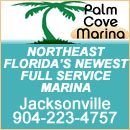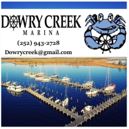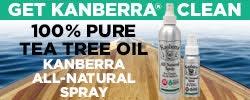FOCUS ON Atlantic Intracoastal Waterway Association
If you are traveling by land using a state highway system, you most likely will see some differences in the roadway from state to state and often you will incur toll roads as you travel. These differences occur for a number of reasons, but a few common denominators are budget dollars and the highways political importance. I worked in the highway safety industry for nearly twenty years and witnessed a lot of what goes into highway sustainability…and let’s just leave it at that ! As a lover of travel by water, my family
has used the Atlantic and Gulf Intracoastal Waterways and always enjoyed the beauty, wildlife, scenic variety, and safety of cruising in such a wonderful environment. I had to pinch myself to not take this capability for granted as you drift into the euphoria of such a wonderful experience. Then you ask yourself, how can we make sure our ICW will always be here, not only for us, but those yet to come to enjoy this national treasure? There are no tolls, no fees, to use this awesome system…should I say “yet” ? We all know what it takes to protect proper anchoring rights in some states and often we hear the call to arms from various groups when these rights are threatened by state legislatures.
I hope you want to learn more about the ICW you enjoy using and become an advocate yourself.  Brad Pickel discusses Georgia’s dredging needs with US Rep Buddy Carter (GA-1) May I introduce you to an association dedicated to all of the above questions and, particularly, one man who, along with a small volunteer board, takes on all parties involved in an advocacy role for the ICW’s sustained availability: the Atlantic Intracoastal Waterway Association (AIWA) and its Executive Director, Mr. Brad Pickel. Every year the AIWA works tirelessly at the Federal level and with states, counties, and towns, as well as with businesses, who depend on the ICW for moving goods and providing services for the marine industry. Currently, a large missing part of this coalition is the individual boating member – you and me – the recreational users and genuine grassroots element. With broad political reach, you and I, the recreational users, live in any one of fifty states, most of which probably don’t have the ICW as part of their sovereign responsibility. Only a few coastal states have the ICW running through them, yet it is the Federal Government, through the Corps of Engineers, that bears THE major responsibility for the ICW being in a usable and safe condition. Its funding comes through the Energy and Water Development Appropriations subcommittee.
The grassroots demographic that cares about the ICW does not reside solely in the coastal states it runs through, but in every state where at least one skipper who enjoys using this unique waterway lives and yet keeps their vessel near the ICW.. We ALL need to keep our Federal representatives aware of the importance of our Atlantic Intracoastal Waterway by asking them for their support of funding to keep this important economic contributor viable. Just this past November, Brad reported on the success of this year’s hard advocacy work to get budget dollars from our US Congress into the Federal Budgeting process for Fiscal Year 2019. Here’s what he reported:
Cruisers Net has long been a supporter of the AIWA and, as mentioned in Brad’s report, those of us who are individual users are needed to strengthen the voice of his advocacy work. We all know that politicians respond to numbers, so whether you live in Arizona, North Carolina, Oklahoma, Kansas, Minnesota, Oregon, or Florida, let your elected Federal representatives KNOW of your support for the Atlantic Intracoastal Waterway and its needs for continual funding to keep the Intracoastal Waterways safe and usable.
And NOW may we suggest that you INVEST $25 dollars to JOIN the AIWA, so they can show the new members of congress the strength and breadth of supporters from all over our country to keep this National Treasure in first class working order. Here is Brad’s contact information and the website for the AIWA…. Let’s go to work here fellow captains, skippers, and crew members to support our waterways. Tell Brad that Cruisers Net sent you.
Contact Information: Brad Pickel Executive Director Atlantic Intracoastal Waterway Association 5A Market Street Beaufort, SC 29906 Tel: 843-379-1151 Website: https://atlanticintracoastal.org
|
































Be the first to comment!